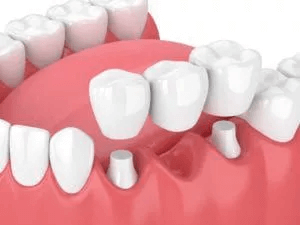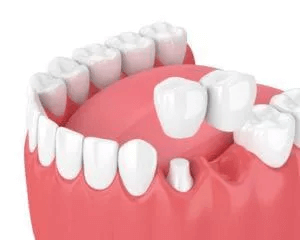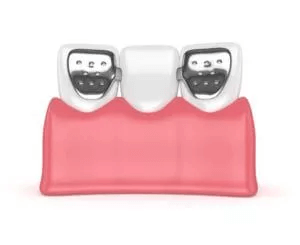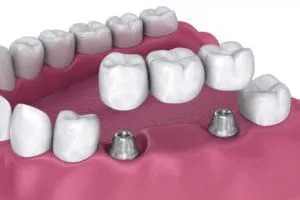Having one or missing teeth can be aggravating. Not only can one or more missing teeth make it difficult to chew or speak clearly, but it can even affect the look of your smile. Not only that, but the surrounding teeth may eventually start to shift into the space left behind. This can change the entire look, alignment, and function of your smile.
For these reasons, and several others, if you have one or missing teeth, your dentist will recommend filling in the gap left by a missing tooth. One restoration option for missing teeth they may recommend is a dental bridge. There are four different types of dental bridges that your dentist may recommend for you.

The first and most commonly used is a traditional dental bridge. Traditional dental bridges are composed of a fake tooth or teeth surrounded by a dental crown on either side. The fake teeth are placed in the gap left by missing teeth, while the dental crowns are attached to the teeth on either side of the gap to support the bridge.
To place a traditional dental bridge, the teeth on either side of the gap will need to be prepared in order to accommodate a dental crown. This preparation consists of reducing the overall structure of the tooth so that the dental crown can fit over the tooth while maintaining a natural appearance. Once the teeth have been prepared, a dental impression will be taken and used to fabricate the permanent bridge.

The second type of dental bridge is a cantilever bridge. This type of dental bridge is composed of a fake tooth and a single dental crown on one side. Since the bridge is only supported by a single dental crown, this type of bridge is not often used. However, there are cases where it may be placed towards the back of the mouth. Placing a cantilever bridge is similar to placing a traditional bridge, however only one tooth is prepared for a dental crown.

The third type of dental bridge is a Maryland Bonded Bridge. This bridge is composed of fake teeth and a metal framework. While it is similar in structure to the traditional bridge, Maryland Bonded bridges use a metal framework as their support in lieu of the dental crowns. This means that the surrounding teeth do not need to be reduced, making Maryland bridges ideal for those who want to preserve their natural tooth structure. Instead, a dental impression is taken and used to create a metal framework that can be fused to the back of the teeth in order to support the fake teeth.

The fourth and final type of dental bridge is an implant-supported bridge. Like their name suggests, implant-supported bridges are fake teeth that are supported by dental implants instead of dental crowns. Dental implants are artificial tooth roots made from titanium screws that are placed in the jawbone. This type of dental bridge has many benefits and is usually recommended for patients who are ideal candidates.
However, the placement of an implant-supported bridge differs from the placement of other types of dental bridges. This is because an implant-supported bridge requires the placement of dental implants. As mentioned before, dental implants are placed in the jawbone. This means that a minor oral surgery is required to place an implant-supported bridge. While implant-supported bridges may require a more invasive placement procedure, they also last longer than any other type of bridge.
Dental bridges are a great restoration option to replace missing teeth and will likely be recommended by your dentist. The four different types of dental bridges all offer their own advantages and disadvantages, therefore it is recommended to speak with your local dentist to obtain more information about which type is right for you.




